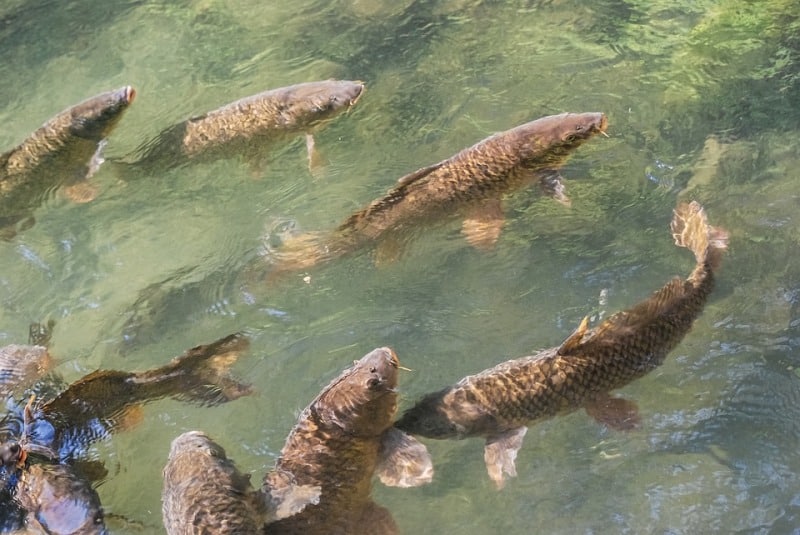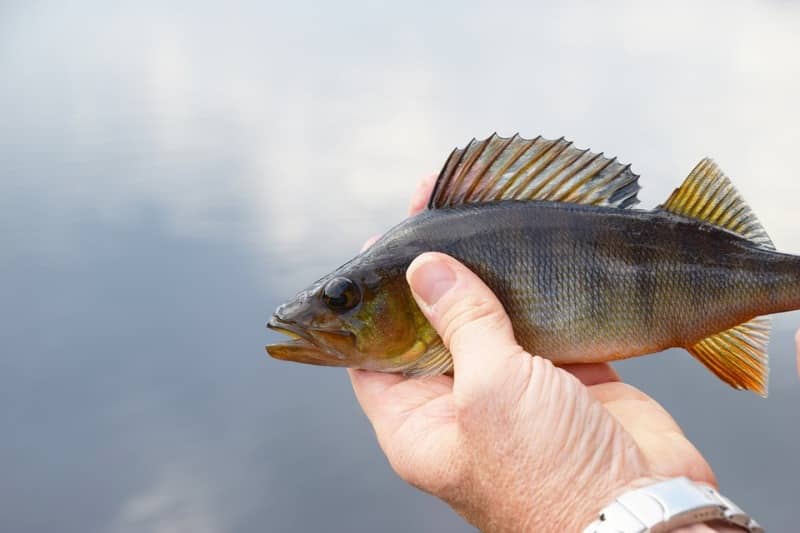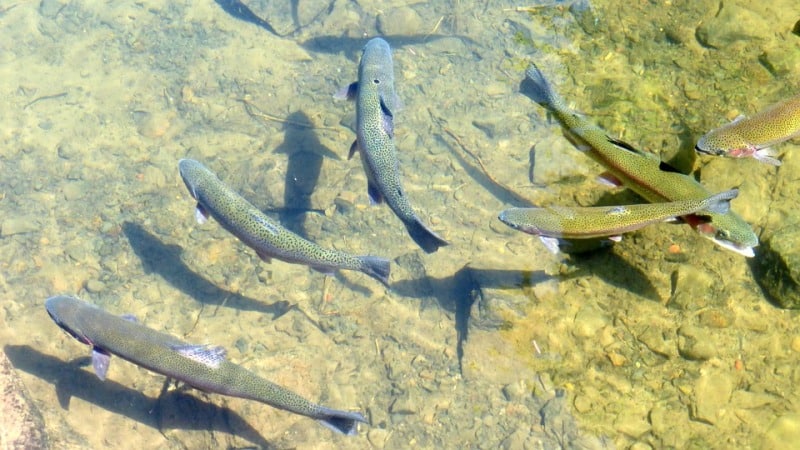A step by step guide to freshwater fish farming in India
Today we discuss the freshwater fish farming in India along with different fish culture method practiced for profitable fish farming. Freshwater fish are those that spend some or all of their lives in freshwater that are rivers and lakes with a salinity of less than 0.05%. These environments vary from marine conditions in several ways, the most obvious being the difference in levels of salinity. To survive freshwater, the fish require a range of physiological adaptations.
Freshwater fish farms consist mainly of earth ponds or basins or canals constructed from concrete, where a continuous water flow-through is maintained from spring, stream, ground or drainage water circulated through airlift systems. There are a handful of fully recirculated aquaculture facilities, that produce more fish with less water and less pollution in closed facilities and India is rich with inland freshwater fish, with about 940 species well-known from its rivers and lakes.
The fish species which live and grow in freshwater is simply called as freshwater fish. Fish species of freshwater fish farm can’t survive in saltwater. The freshwater fishes production has grown rapidly at the rate of 5.0 percent in last five decades and which is next to poultry sector has tremendous potential to further increase its share to the net animal protein and total protein availability in the country.

Temperature requirement for the freshwater fish farm:
Most people can keep the required temperature for the fish selection in their fish farm. However, many people neglect the plant life that they place within their fish farm which is equally as dependent upon the temperature of the water.
It is crucial to choose fish that thrive within a similar temperature range as well as plants that can be maintained in this same range to promote the optimal aquarium atmosphere. The average temperature for a freshwater fish community is between 72 – 82 degrees Fahrenheit. For plant life the average temperature falls between 76 – 86 degrees Fahrenheit.
The pH level of Freshwater fish tanks:
The pH level of the water in the freshwater fish farm is also another important factor. Different types of fish require different pH level balances in the water, while some thrive in a much more acidic atmosphere others may not.
It is very important not to mix fish that require a more acidic aquarium with those that require a less acidic aquarium to promote the health of your fish. Mixing two varieties of fish that have different pH level requirements will eventually lead to the death of one of the fish types within the aquarium.
As with temperature, pH level is another factor that not only influences the health of fish within the tank, but it also affects the health of plant life within the tank as well. The average pH of a freshwater fish farm community is between 6.5 and 7.5 and the average pH requirement for freshwater plant life is 6.0 to 7.5.
You should also check the Tilapia Fish Feed Formulation.

Wastewater from freshwater fish farms is the main concern because wastewater can negatively impact the environment in the receiving water body.
Large quantities of organic compounds and nutrients in wastewater and fish sludge can effect in oxygen deficiency in the receiving body of water, and thus affect in a decline in water quality as well as the natural biological communities. Also, wastewater can have residues of medicine and chemical additives that are added to farms to treat sick fish, cleaning of facilities or added as water treatment.
As an effect of dams and weirs, channel straightening and other types of stream alterations, fish farms can also cause physical damage to near-by streams. Most fish farmers though, take into consideration the native fish and their migratory sample by placing fish ladders or the like for the fish to pass the dam or weir.
Some freshwater fish species:
Some of the freshwater fish species are given below;
Katla, Rui, Bele, Kalibaus, Ghonia, Mrigal, Nandina, Common Carp, Sharpunti, Dankina, Titpunti, Mola, Boumach, Chela, Darkina, Gutum, Tangra, Rita, Aier, Boal, Pabda, Golsa Tangra, Magur, Kajoli, Pangas, Gozar, Shol, Kuche, Tepa, Shing, Tilapia, Kholisa, Batashi, African Catfish, Chital, Chapila.
Freshwater fish culture systems
Cultivable organisms are cultured in several types of culture systems. Many culture systems are based on traditional ideas that have been used for years, but some encompass new and sometimes radical concepts that create them unique. There are mainly three major culture systems. They are open, semi-closed and closed culture systems.
Open culture systems:
Open systems are the oldest and its farming is the use of the environment as the freshwater fish farm. Natural resources can be used as open culture systems and organisms to be cultured are stocked in the water body.
You may also like Lobster Farming; Culture for Maximum Profit.

Capital expenses are very low for open culture systems. There is less management than in the remaining systems. The conditions are natural and uncrowded in the culture environment; less time is required in monitoring the condition of the culture organisms in open systems. The main disadvantages like predation and poaching are common. The growth rate and the uniformity of the product are changeable compared to other systems. Cages, long lines, floats, rafts, trays, and clam beds are the best examples of open system techniques.
Cage culture:
Cage system is the culture of fish or other organisms in a river, lake or bays by holding them in cages. In cage system cages are built of metal rods, bamboo mesh or PVC pipes and covered by mosquito cloth or nylon net. In recent years cage culture has been considered as a highly specialized and sophisticated modern aquaculture system.
Pen culture:
Pens are the particularly designed nylon or bamboo made enclosures constructed in a water body into which fish are released for culture. Such kind of culture is referred to as pen culture.
Raft culture:
Rafts are normally made of bamboo poles or metal rods with buoys at the top for floating in the water.
Semi-Closed Culture Systems:
In semi-closed culture systems, water is taken from natural sources or groundwater and is directed into particularly designed ponds and raceways. These systems offer an advantage over open systems in that they allow better control over the growing conditions.
Closed Culture System:
In closed culture fish systems, no water is exchanged and the water is subjected to extensive treatment. Extremely high densities of organisms can be raised under these conditions.
That’s all folks about freshwater fish farming in India to get maximum profits. Keep raising fishes.
You may be interested in Growing Lavender in Hydroponics.
Can I get details of prawn, subsidy and other details of fish farming. And also types of fish farming in India